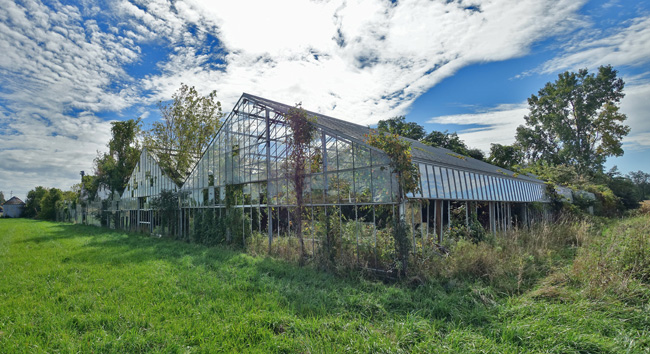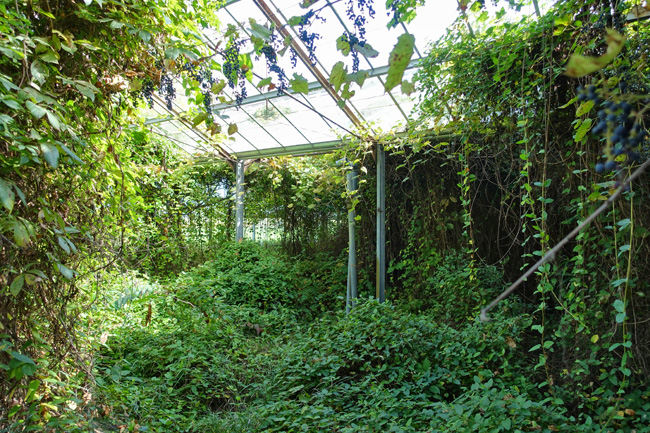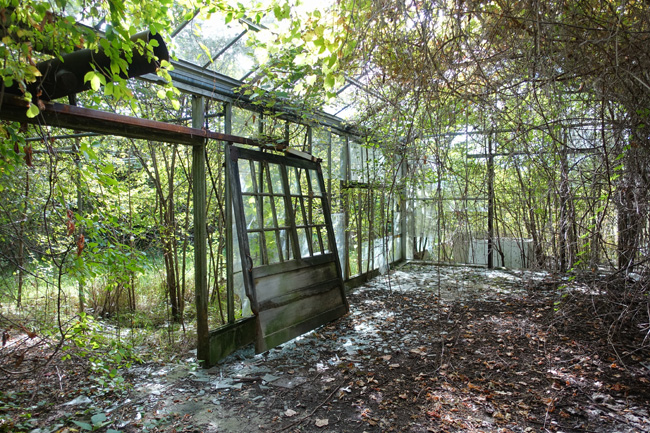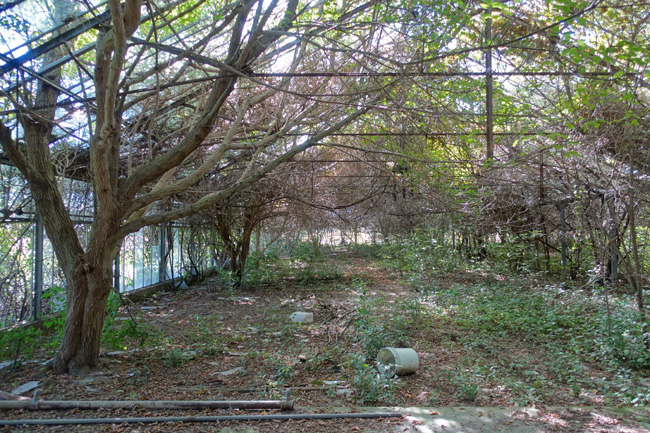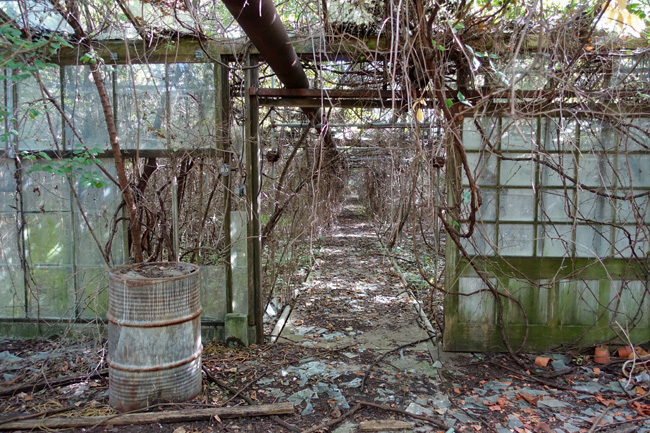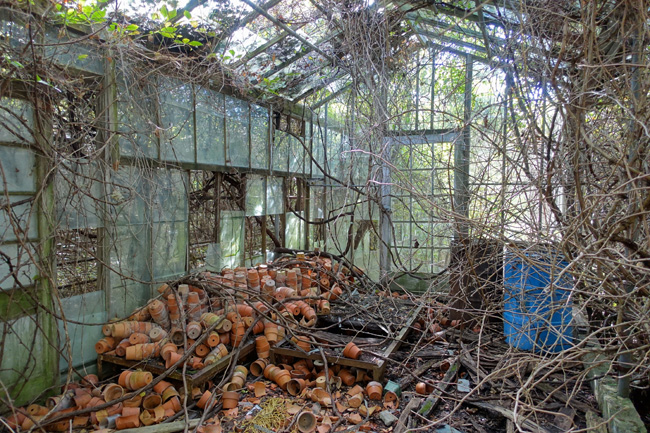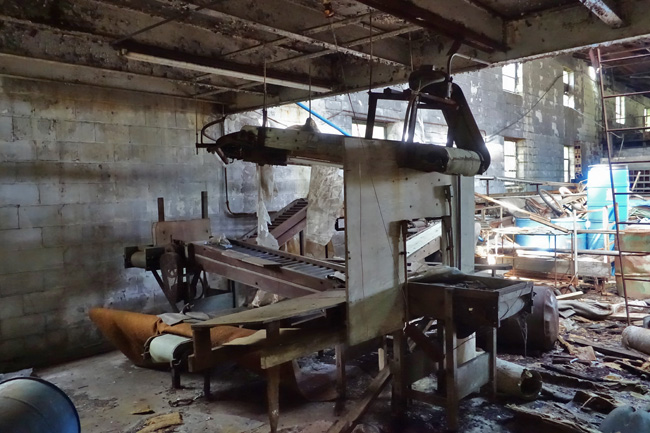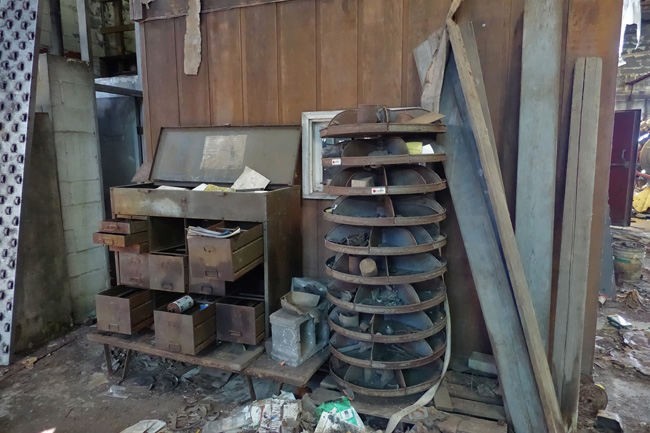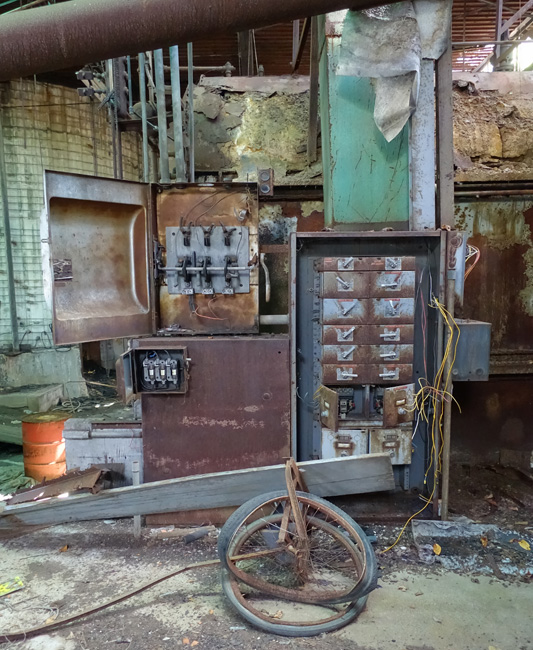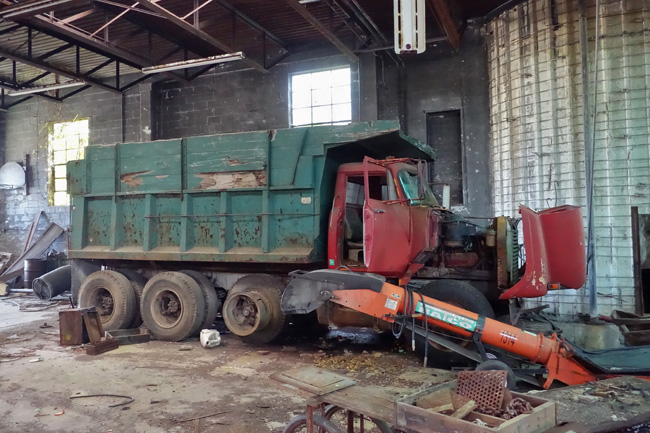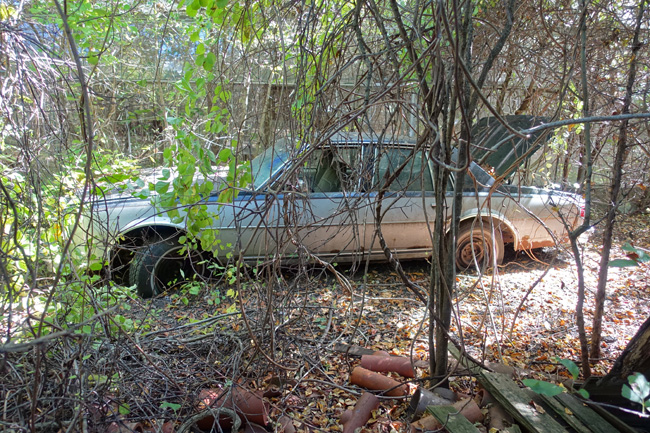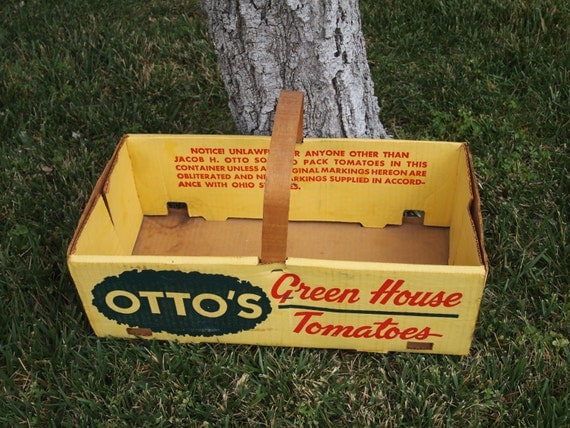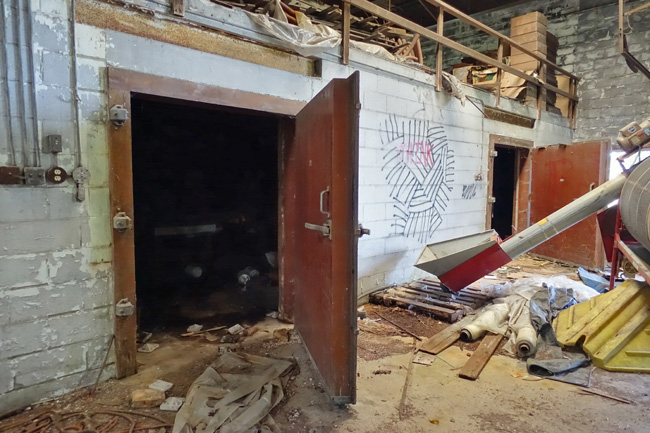On a sunny autumn morning about 2 weeks into my epic Rust Belt road trip, I made my way through Erie County, Ohio. I'd spent the previous day exploring the awesome remains of an abandoned WWII era ammunition factory and the industrial ruins of South Bend, Indiana before continuing eastward into Ohio.
With Lake Erie to my left and stretches of farm fields and forest lands on my right, I came upon a sight so unusual and striking that I had to pull over for a closer look. A smokestack towered over a sprawling abandoned greenhouse complex overcome by the plant life it once contained.
Trees burst through the glass ceilings and explosive plant growth dislodged panes of glass from the structure's metal frame.
A glimpse inside revealed a ground blanketed in greenery. Leafy vines and trees grew along the walls giving the place a jungle-like atmosphere. I felt like I was peering into some magical realm from a storybook.
Untended vines grew thick, twisting around poles to reach up through the shattered roof.
Some areas were so heavily shaded by foliage that few plants grew along the floor.
A heap of empty plant pots lay against a wall.
Rusting equipment remained inside the main building.
Several abandoned vehicles sat on the property.
The Otto family owned and operated Otto's Greenhouse for several generations, reaching back to the 1800s. They cultivated a variety of crops including cucumbers, flowers and tomatoes.
Vintage cardboard tomato boxes from the 1960s can still be found on Etsy.
The family had at least one other greenhouse in the Ceylon area, featuring a similar smokestack, but the facility is no longer standing.
Otto's Greenhouse closed in the late 1990s due to financial difficulties. The details surrounding the closure are difficult to pin down, though a variety of reasons have been cited. Competition from cheaper imported Mexico-grown tomatoes undercut profits, especially in the wake of NAFTA in the late '90s. An attempt to pump water from Lake Erie is said to have resulted in the flooding of local homes due to an improperly installed valve.
Whiteflies, the bane of many tomato growers, also played a part in the demise of Otto's Greenhouse. The insect draws sap from the tomato plant, often spreading devastating viruses and mold infestations.
I was fortunate to have the opportunity to see Otto's Greenhouse while it still stood. This beautiful structure has been demolished since the time of my visit. A drone video posted on Youtube shows that very little remains of the greenhouse, other than the smokestack and the gutted shell of the main building.
I resumed my journey eastward to Akron, Ohio, where I lived out my dream of exploring a dead mall. I can hardly wait to tell you about it.
Thank you for checking out this article. If you enjoyed it, please share it on Facebook.
To receive an email announcement when I post my next article, please subscribe to Places That Were.
Until then, click here to read about other awesome abandoned places I've explored.
I have many more pictures of Otto's Greenhouse, which I will share on social media, so feel free to follow these links and subscribe to my feeds:
Facebook: http://www.facebook.com/placesthatwere
Instagram: http://instagram.com/theplacesthatwere
Twitter: https://twitter.com/placesthatwere/
Tumblr: http://placesthatwere.tumblr.com/
Google+: https://plus.google.com/u/0/+JimSullivanPlacesThatWere/posts
EyeEm: https://www.eyeem.com/u/placesthatwere
Youtube: https://www.youtube.com/jimplicit
Thank you!
